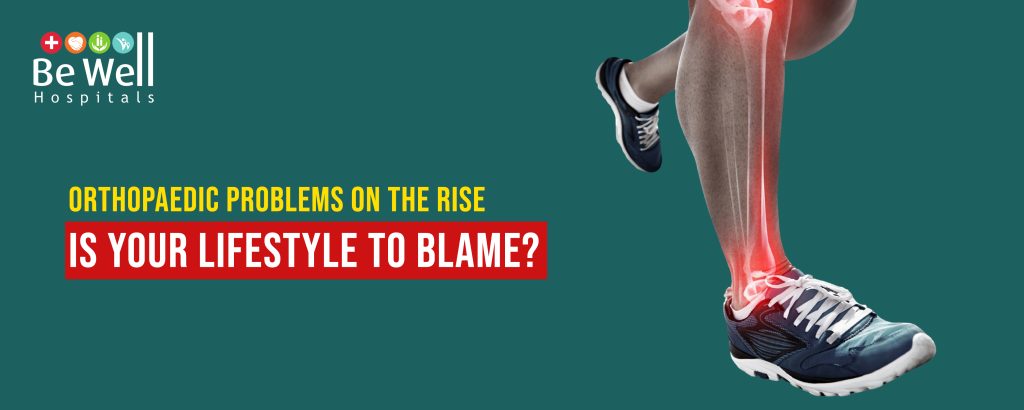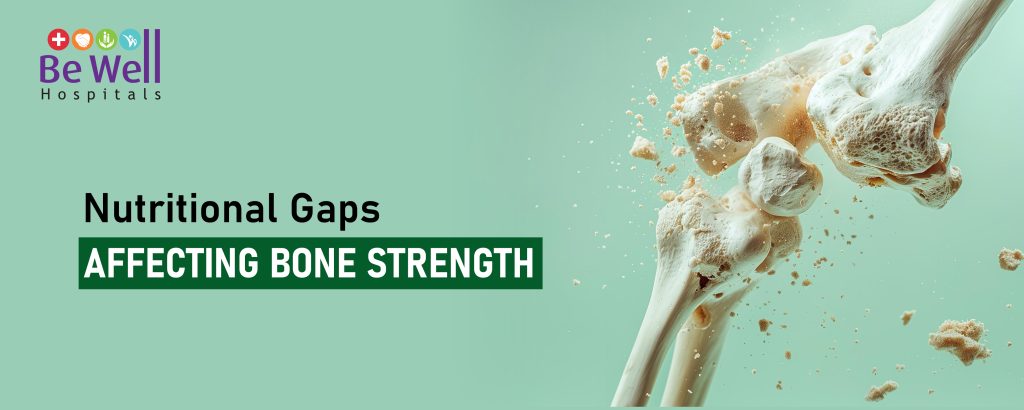
Introduction
Orthopaedic problems are no longer limited to the elderly or athletes—today, they’re increasingly affecting young adults and working professionals. From nagging backaches to chronic knee pain and stiff necks, these issues are becoming alarmingly common. Surprisingly, our modern lifestyle may be a major culprit. Sedentary routines, poor posture, gadget overuse, unhealthy diets, and lack of physical activity are putting strain on our bones and joints like never before. This blog explores how everyday habits are silently damaging your musculoskeletal health—and what you can do to prevent long-term orthopaedic complications before it’s too late.
Understanding Orthopaedic Health in a Modern Lifestyle
A sedentary lifestyle—marked by prolonged sitting and minimal physical activity—can seriously impact bone and joint health. Without regular movement, bones receive less stimulation needed to maintain their density and strength, increasing the risk of osteoporosis and fractures. Inactivity also weakens the muscles that support joints, making them more vulnerable to strain and injury. Sitting for long hours encourages poor posture, which can lead to chronic back pain, neck stiffness, and spinal misalignment. Furthermore, reduced circulation affects nutrient delivery to bones and cartilage, hindering repair and health. Sedentary lifestyles often lead to weight gain, placing added pressure on weight-bearing joints like the knees and hips.
Tech Neck and Other New-Age Concerns
Excessive screen time and smartphone use have introduced a new set of orthopaedic issues. “Tech Neck,” caused by prolonged forward head posture, leads to neck pain, stiffness, and headaches. “Texting Thumb” or smartphone-related thumb pain arises from repetitive motion, sometimes resulting in tendon inflammation. Poor ergonomics while working—such as using a laptop without proper support—can cause carpal tunnel syndrome, where nerves in the wrist get compressed, leading to numbness and pain. Improper seating also contributes to back pain and shoulder misalignment. These conditions, once rare, are now increasingly seen in younger populations.
Common Modern Orthopaedic Issues
- Tech Neck
- Texting Thumb / Smartphone Thumb
- Carpal Tunnel Syndrome
- Upper Crossed Syndrome (rounded shoulders and forward head posture)
- Lower back pain from poor seating
- Wrist strain from prolonged typing or gaming
- Sedentary-induced joint stiffness
Raising awareness, taking regular breaks, and improving ergonomics are essential to prevent these from becoming chronic.
The Impact of Obesity on Joint Health
Unhealthy eating habits, lack of exercise, and irregular sleep patterns contribute to obesity, which in turn damages joint health. Excess weight places significant stress on the knees, hips, and lower back. Over time, this added pressure wears down cartilage, increasing the risk of osteoarthritis. The knees, bearing three times the body weight with each step, are particularly vulnerable. Chronic inflammation from obesity can further damage joints, triggering persistent pain. Adopting a balanced diet and regular physical activity helps manage weight and reduce joint strain.
Exercise: Balance is Key
Too little exercise leads to weakened muscles and bones, loss of bone density, joint stiffness, poor posture, and weight gain—all contributing to chronic pain and injury risk. On the other hand, incorrect workout techniques can cause serious injuries such as ligament tears, stress fractures, muscle strains, joint dislocations, and spinal damage. Proper warm-ups, guided exercises, and listening to your body are essential for safe and effective workouts that protect joint health.
Footwear and Posture Connection
Improper footwear is a major but often ignored contributor to orthopaedic problems. Shoes lacking arch support or cushioning—like high heels, flat sandals, or old sneakers—can misalign the feet, affecting overall posture. This misalignment strains the ankles, knees, hips, and back. Conditions such as plantar fasciitis, knee pain, and lower back stress are commonly linked to poor footwear. High heels, in particular, shift body weight forward, overloading certain joints. Choosing ergonomic footwear and practicing good posture can significantly reduce these risks.
Nutritional Gaps Affecting Bone Strength

Modern diets often lack essential nutrients vital for bone health. Calcium deficiency is widespread due to low intake of dairy, leafy greens, and fortified foods. Vitamin D, necessary for calcium absorption, is also often lacking due to limited sun exposure. Excess sugar, sodium, and caffeine hinder calcium retention. Protein, needed for bone tissue repair, is frequently imbalanced. These gaps can lead to weakened bones, higher fracture risk, and chronic joint pain. A bone-friendly diet rich in calcium, vitamin D, protein, and magnesium is key.
Work-from-Home Ergonomics
The rise of remote work has introduced new ergonomic challenges. Many people work from sofas or beds without proper back or wrist support. Laptops placed too low or high strain the neck and upper back. Unsupported chairs cause slouched posture and spinal misalignment. Over time, these habits result in chronic discomfort and muscular imbalance. Investing in ergonomic furniture, maintaining correct posture, and taking regular breaks are crucial for preventing long-term musculoskeletal issues.
How Stress and Sleep Affect Joint Health
Chronic stress raises cortisol levels, promoting inflammation and exacerbating joint pain. Lack of sleep hampers the body’s natural healing processes, prolonging muscle soreness and slowing injury recovery. Poor sleep posture can also worsen neck and back pain. Stress-induced behaviors like muscle tension, teeth grinding, and inactivity add further strain. Managing stress through relaxation techniques and ensuring adequate, restful sleep are vital for musculoskeletal health.
Early Warning Signs Not to Ignore
- Persistent joint or bone pain
- Swelling or inflammation
- Reduced range of motion
- Clicking, popping, or grinding joints
- Muscle weakness
- Difficulty bearing weight
- Numbness or tingling
- Visible joint deformities
- Warmth or redness in joints
- Sudden instability or giving way
- Pain at night or during activity
- Trouble with daily movements
Identifying these signs early allows timely medical intervention and prevents further complications.
Lifestyle Adjustments for Prevention
Preventive care is the best strategy. Maintain good posture with a straight spine and relaxed shoulders. Stretch daily to improve flexibility and reduce stiffness. Limit screen time and take breaks to avoid strain. Manage weight through diet and exercise. Choose supportive footwear and avoid high heels or flat sandals. Eat a nutrient-rich diet with adequate calcium, vitamin D, and protein. Use ergonomic furniture for work and ensure good sleep posture. Managing stress and prioritizing sleep will support healing and joint health.
Conclusion
Awareness truly saves lives. Orthopaedic issues may be increasing, but they are largely preventable with conscious lifestyle changes. From posture correction and ergonomic habits to balanced nutrition and stress management, every small step matters. Ignoring early signs can lead to chronic pain and reduced mobility, while proactive care can help maintain a pain-free, active life. Whether you’re a working professional, a student, or a stay-at-home parent, protecting your bone and joint health should be a top priority. If you’re experiencing symptoms or want to know more about preventive orthopaedic care, consult our experts at Be Well Hospitals or call 9698 300 300 today.
